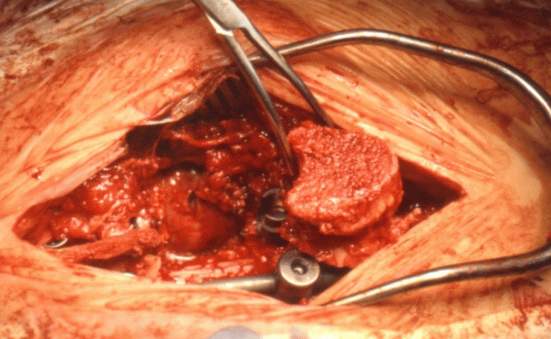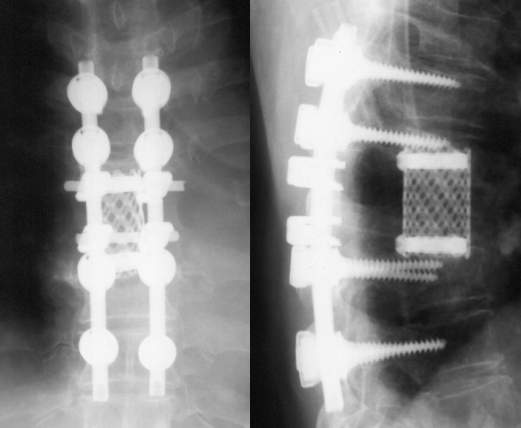|
|
 |
 |
 HOME > 증 례 003 HOME > 증 례 003 |
|
Calcifying tumors such as cartilagenous or vascular tumors should be included in the differential diagnosis. Considering her age and CT findings, the possibility of malignancy should be kept in mind.
Total spondylectomy through posterior approach was performed, because the lesion involved both anterior and posterior elements and the possibility of malignancy could not be excluded. Preoperative embolization was not carried out. The surgical procedure, which is illustrated below, was a modification of that of professor Choon-Ki Lee. Posterior stabilization was done with a pedicle screw system, and the anterior elements were reconstructed with a mesh cage with morsellized iliac bone chips.




Grossly, the tumor was a well-circumscribed red nodular mass. The histopathologic examination revealed a hypercellular vascular tumor with rare mitotic figure. The lining cells were strongly positive on immunohistochemical staining for factor VIII-related antigen.

After the operation, neurologic symptoms improved gradually. At three months after the operation, she could walk alone without support. Radiating pain resulting from resection of T6 nerve roots disappeared within 3 months of the operation. At 16 months after the operation, no neurologic symptoms or signs were observed: the power of all the muscles of both lower extremities was normal, and she could even run. She complained of nothing but mild discomfort at the operation site.
|
|
 |
Hemangioendothelioma is a rare vasoformative vascular tumor of variable biological behavior. Its principal sites of occurrence are soft tissues, liver, lung, and bone. Only six cases of primary spinal column lesions have been reported in the English literature, one in cervical, two in thoracic, and three in lumbar: this is the third case of thoracic location.
Usual treatment of this rare tumor has been staged anterior and/or posterior decompression following preoperative embolization. The high vascularity of this lesion makes surgery a formidable surgical challenge. This was the first case of one-stage total spondylectomy without preoperative embolization, which resulted in a successful outcome.
<Back>
|
|
|
|


